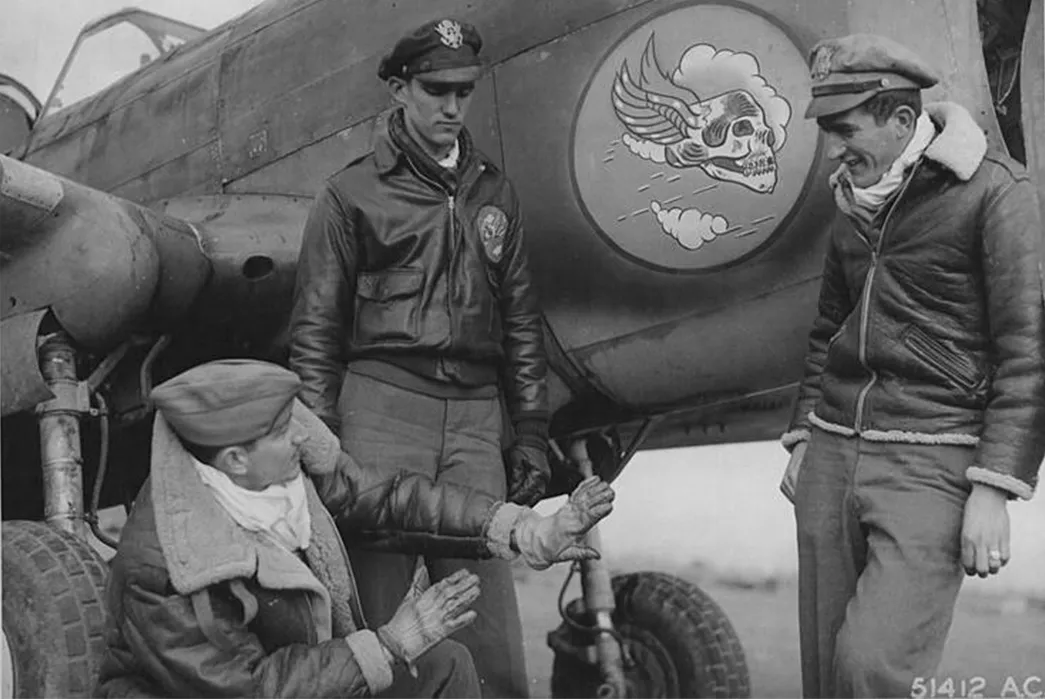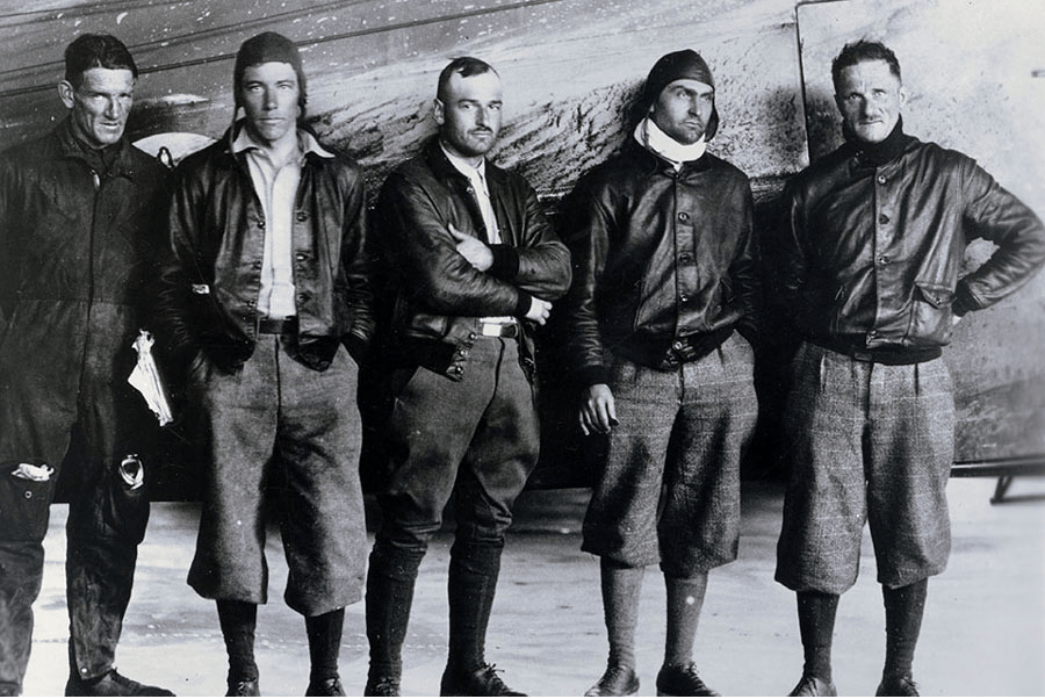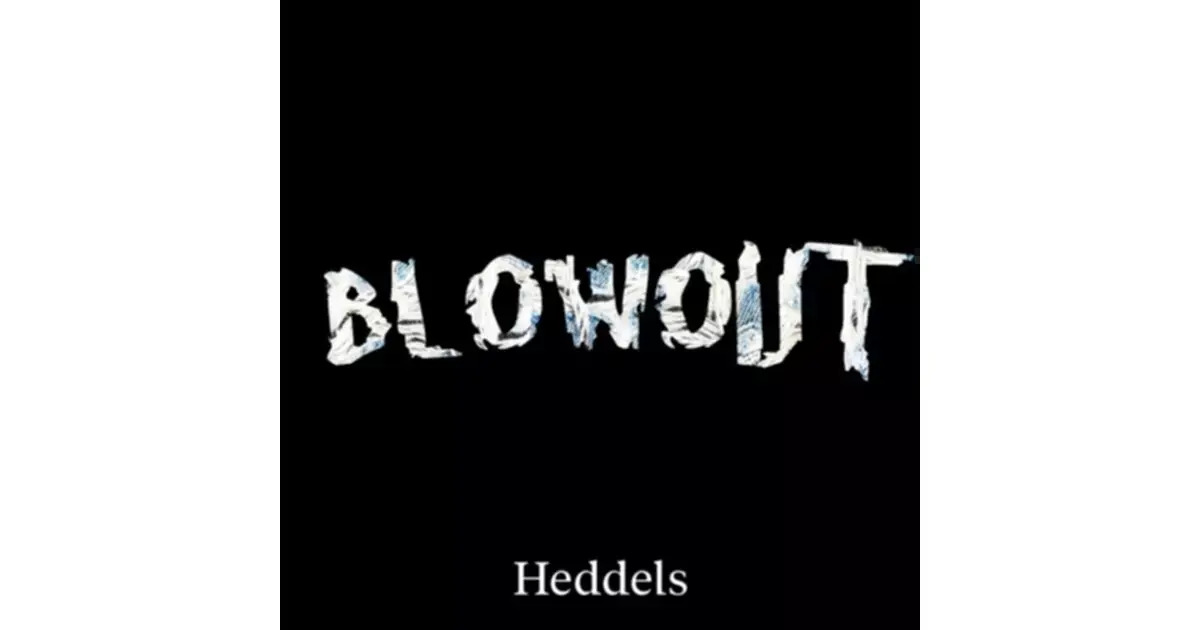- Heddels
- Posts
- Oct 14 - Key American Flight Jackets From 1927 to 1946 – The Complete Guide
Oct 14 - Key American Flight Jackets From 1927 to 1946 – The Complete Guide
Together With
Key American Flight Jackets From 1927 to 1946 – The Complete Guide
We run down the outerwear of the early American military flyers, from A-1 to B-15 and nearly everything in between.
Albert Muzquiz

Four miles south of Kitty Hawk on December 17, 1903, Wilbur and Orville Wright were probably too busy celebrating the success of the world’s first functional fixed-wing aircraft to realize the impact their invention would have on the way people dressed. The airplane, as it would come to be called, would prove to be devastatingly effective on the battlefield and become a crucial part of any modern mechanized war effort. But it was later, in the American armed services, that the now-essential piece of outerwear we call the flight jacket was invented.
Even after the wars were over and the pilots went home, their jackets stayed important, becoming something of a phenomenon especially with those who hadn’t flown. It wasn’t just because these jackets were warm and fit well, but because there was something otherworldly iconic about the people who wore them as members of the newest and least-tested branch of the armed services. As technology advanced, sending pilots higher and faster into the unknown, their uniform changed, but this aura of idealized American ingenuity and military might remained.
As the American military began to expand into the unrivaled behemoth it is today, its know-how with outerwear grew apace. This article examines the first flying jackets produced by the U.S. military from the first standardized garment in 1927 through the beginning of the jet age in 1950.
A Little Bit of History

Recruitment Poster by Charles Livingston Bull — Image via De Spiegel
The Aviation Section of the U.S. Signal Corps was the military branch that helped the American doughboys fight the Germans during World War I. But the first step toward the modern flight jacket was made until 1917 with the founding of the Aviation Clothing Board. The planes of the time had open cockpits, so it was absolutely essential that pilots be well-garbed for duty. All told, it was undoubtedly a wet, cold, and unpleasant business being a pilot in the early days of military flight.
The Aviation Section became the Army Air Service in 1918, which would in turn become the United States Army Air Corps in 1926. As planes improved, so too did the structure and bureaucracy of the military branch commanding them. Even the uniforms got better.
/ In Partnership with Devium USA /
Devium doesn’t do half measures. Meticulously and holistically sourcing all materials from the USA, each of their garments is made with purpose and integrity. The brand’s new Grafton Tee adds to that inventory of truly American garb, offering a super heavyweight t-shirt, made in Los Angeles from 8.3oz/280gsm jersey. If ounces and grams per square meter don’t mean anything to you, just know that’s a beefy tee.
Every element of each Grafton tee is made in the USA from cotton seed to stitch, forming a burly t-shirt suitable for grafting, grooving, and everything in between.
Get yours at Devium for $48.
A-1 (1927-1931)

Original A-1s in action via The Rake.
First produced in 1927 and decommissioned in 1931, the A-1 was a vital first step in the creation of the iconic flight jacket. Made by a number of contractors, details vary widely on these jackets, but most have several things in common.
The A-1 had a knit waistband and cuffs, which not only insulated the jacket from cold air but gave it a particularly flattering fit, high on the waist. The A-1 also had flapped pockets near the waist, but the size and stitching of these are all over the place, depending on the contractor or whether they were used by the Air Corps or Navy. The original jacket had seven buttons and a knit collar, details that did not live on in the following models. There is some disagreement about what leather was used for these jackets, but it seems that goatskin, sheepskin, and horsehide were all used at different times and by different contracted factories.

Charles Lindbergh and The Spirit of Saint Louis. Image via The Library of Congress
Although the A-1 is not nearly the most iconic of the jackets discussed here, its value cannot be underestimated. As planes became more complex and pilots more daring, the link was forged between the courageous pilot and his jacket. Above, Charles Lindbergh wears a well-worn A-1 style jacket before completing the first solo transatlantic flight in 1927.
Buzz Rickson’s A-1 No. 31-800P Seal Brown, available for $2,300 from Clutch Cafe.
A-2 (1931-1943)

A-2 Jackets and Life Vests. Image via WYSO.
The A-2 Flight Jacket arrived on the scene in the early 1930s and became standard issue for the Air Corps. First made from a “seal brown” horsehide leather with a silk lining, the quality of the jackets fell somewhat with wartime rationing and the transition to a goatskin leather with cotton lining.
Despite the technological advances made in the previous years of aviation, the A-2 was still optimized for an open-air cockpit and so featured heavy-duty fasteners and again had the knit waist and cuffs. The zipper and the collar are the biggest differences from the A-1 and despite the fact that the cut is relatively similar, there is something more debonair about the A-2.

Steve Mcqueen. Image via Eastman Leather.
The A-2 was finally phased out in 1943, but the jacket worn by the Air Corps daredevils of World War II would become perhaps the best known of the ones on this list. They were so cool, in fact, that when Steve McQueen played Virgil Hilts in The Great Escape, he of course, needed an A-2.
Cockpit USA WWII Government Issue A-2 Jacket Z2107H in Brown, available for $720 from Cockpit USA.
G-1 (1938-Present)

Original G1s in action. Images via Original Flight Jackets & Mitchell Mfg.
The G-1 picked up where the A-2 left off. It was adopted by the Army and Navy as early as the 30s, but didn’t replace the A-2 among the Air Corps pilots until 1943. It was originally called ANJ-3, but received the G-1 designation after the end of the war.
This new jacket featured a mouton collar and a bi-swing back for greater arm movement (a detail you can see in the above picture). Although also a zipped jacket, the G-1’s zipper lacks the A-2’s “wind flap” detail.
And yes, it’s the jacket from Top Gun. If you were scanning this article to find the Top Gun jacket, this is it.

Cockpit USA makes both a stitch-for-stitch official version of the G-1 in Top Gun ($1,200) and the Navy spec original without all the patches from them for $700.
B-3 (1934-1943)

B-3 Jackets. Image via Overland.com.
While some of the above jackets are mistakenly referred to as “bomber jackets” by laymen, the B-3 was a jacket designed specifically for the high-altitude needs of bombers. This was a bulky sheepskin jacket with a heavy-duty sheep-fur lining meant to keep folks warm at 25,000 feet in the air.

General George S. Patton in a B-3 flying jacket in 1943. Image via the Library of Congress.
For extra protection, the wide sheepskin collar could be closed with two leather straps. Far bulkier than the flight jackets, the B-3 does not have the knit waistband and trim fit that made the other jackets famous. Rather, its warmth and durability made it a hit, even with Army General George S. Patton.
A heavy-duty jacket designed for the sub-freezing temperatures of high-altitude flying, the B-3 is a great, time-tested option. Cockpit makes a version both with and without a hood, as well as a replica of the specially modified jacket worn by General Patton, starting at $1,370.
B-6 (1939-1943)

Flight Jackets. (Left to Right) A-2, B-3, and B-6. Image via Sierra Hotel Aeronautics
The B-3 peacefully coexisted with its slimmed-down cousin, the B-6. The B-6 arrived on the scene around 1943 and reflected the improving conditions in the bombers for pilots. With cabins slightly warmer, the B-6 was a slightly lighter-weight version of the much bigger jacket.
You can see in the above picture that the B-6 fit quite a bit more like the other slim flight jackets, while still retaining many of the most important features of its predecessor. Namely, the sheepskin/sheep’s fur combination. With just slightly less shearling for a slimmer fit and only a single throat latch, the B-6 was a somewhat more wearable garment.
Cockpit USA B-6 Shearling Bomber Jacket Z21U028, available for $1,500 from Cockpit USA.
B-7 (1941-1942)

Image via US Militaria Forum.
Somewhat of a one-off, the B-7 Parka was designed specifically for the men flying in unheated cockpits in the bitter cold of Alaska. The three-quarter length jacket is made from shearling like its B-compatriots and has a coyote fur-lined hood. It was only made for one year, from 1941 to 1942, and discontinued due to its high production cost.
If you’re committed to “collecting them all” or would just rather spend your money on a jacket than a heating bill this winter, you can pick up a reproduction from Cockpit USA for $2,200.
B-10 (1943-1944)

Two B-10 jackets (left) and an A2 (right).
The B-10 jacket arrived in 1943 and phased out the previous B-models. But as can be seen in the last couple of photos, the timeline for these comings and goings can be a little messy, with different units wearing different versions of jackets and many different contractors designing slightly different models of the same jacket. But, back to the task at hand.
The B-10 was a cloth jacket that came with an alpaca fur collar and lining. It very closely resembled the G-1 jacket, with the same style pockets and the zip-closure without a wind flap. This lighter-weight jacket was not nearly as warm as the sheepskin jackets it had discontinued, which must also be seen as evidence of advancing technology, or at least warmer plane cabins. The jacket was released in various olive drabs and navy blue and became incredibly popular even outside of the Air Corps.
Cockpit USA B-10 Flight Jacket Z24S002, available for $440 from Cockpit USA.
B-15 (1944-1954)

B-15 Flight Jacket. Image via Robbreport.
The B-10’s brief reign ended in 1944 with the flight jacket that would endure for the rest of the 1940s and become what most people today view as a proper bomber jacket. The B-15 had a mouton fur collar and the wool knit waist and cuffs of many of the previous models but was produced in a variety of different shell materials, including nylon and a cotton-rayon blend. Also new was a pen pocket high on the left upper arm of the jacket, a detail that would remain (and grow) for decades to come.

Chuck Yeager in a B-15. Image via U.S. Air Force.
This jacket went mainstream just as the so-called ‘jet age’ began, with Chuck Yeager breaking the sound barrier in 1947 and the United States Air Force becoming its own independent military branch in the same year. Planes had changed quite a bit since the quaint little Wright Flyer left the ground, and so had the clothes of the people who flew them.
For a B-15 reproduction made with the nylon outer, check out Cockpit again, which offers the above jacket in both olive and “Air Force blue” for $395 at Cockpit USA.
Like this? Check out Our Blowout Podcast
What did you think of today's newsletter? |











